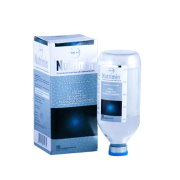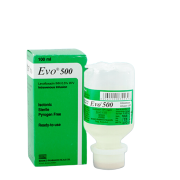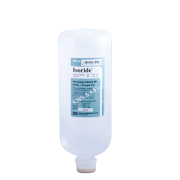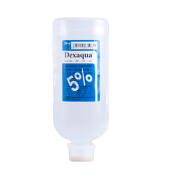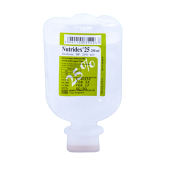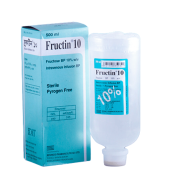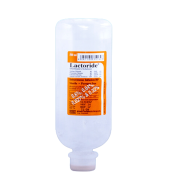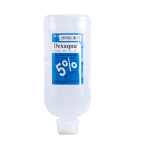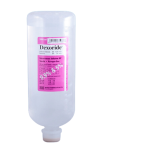Dexaqua DS
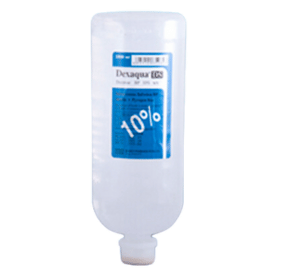
Generic Name: 10% w/v Dextrose
Dosage Form: Sterile Solution
TG Name: Intravenous Fluids
1. What Dexaqua DS is and what it is used for?
Dexaqua DS is a sterile solution of Dextrose Monohydrate. Each 100 ml of solution contains Dextrose Monohydrate equivalent to Dextrose Anhydrous BP 10 g. It provides 400 Kcal energy per liter.
Dexaqua DS is administered in the treatment of simple dehydration, carbohydrate depletion and hypoglycaemic coma. It is also used to provide a temporary increase in blood volume in haemorrhage and shock. Because of its high dextrose content it is indicated in jaundice, eclampsia, preeclampsia, general weakness, unconsciousness and when patient can not take anything by mouth.
2. Before you take Dexaqua DS
Do not take this medicine and tell your doctor if:
You should not use this medication if you are allergic to dextrose.
Before using dextrose 10% in water, tell your doctor if you have diabetes, breathing problems, an electrolyte imbalance, kidney or liver disease, a food or drug allergy, or if you receive regular blood transfusions.
Take special care with Dexaqua DS
Check with your doctor before taking this medicine if:
You should not use this medication if you are allergic to dextrose.
To make sure you can safely use dextrose 10% in water, tell your doctor if you have any of these other conditions:
- diabetes;
- breathing problems;
- an electrolyte imbalance (such as low levels of potassium in your blood);
- kidney or liver disease;
- any allergy to foods or medicines; or
- if you receive regular blood transfusions.
Pregnancy and breast-feeding
FDA pregnancy category C. It is not known whether dextrose 10% in water will harm an unborn baby. Tell your doctor if you are pregnant or plan to become pregnant while using this medication.
It is not known whether dextrose 10% in water passes into breast milk or if it could harm a nursing baby. Do not use this medication without telling your doctor if you are breast-feeding a baby.
3. How to take Dexaqua DS?
Taking this medicine. Always use Dexaqua DS exactly as your doctor has told you. You should check with your doctor or pharmacist if you are not sure.
How much to take?
The volume and rate of infusion of dextrose solution will depend upon the requirements of the patient and the judgement of the physician. The recommended flow rate is 30-80 drops per minute, infused intravenously
If you take more Dexaqua DS than you should
Seek emergency medical attention.
If you forget to take Dexaqua DS
Call your doctor for instructions if you miss a dose of dextrose 10% in water.
If you stop taking Dexaqua DS
Stop using dextrose 10% in water and call your doctor at once if you have a serious side effect such as:
- severe burning, pain, or swelling around the IV needle;
- warmth, redness, oozing, or bleeding where the IV was placed;
- fever, ongoing cough;
- high blood sugar (increased thirst, increased urination, hunger, dry mouth, fruity breath odor, drowsiness, dry skin, blurred vision, weight loss);
- headache, trouble concentrating, memory problems, weakness, feeling unsteady, hallucinations, fainting, seizure, shallow breathing or breathing that stops;
- low potassium (confusion, uneven heart rate, extreme thirst, increased urination, leg discomfort, muscle weakness or limp feeling); or
- anxiety, sweating, pale skin, severe shortness of breath, wheezing, pain, fast or uneven heart rate.
4. Possible side effects
- severe burning, pain, or swelling around the IV needle;
- warmth, redness, oozing, or bleeding where the IV was placed;
- fever, ongoing cough;
- high blood sugar, headache, trouble concentrating, memory problems, weakness, feeling unsteady, hallucinations, fainting, seizure, shallow breathing or breathing that stops;
- low potassium or anxiety, sweating, pale skin, severe shortness of breath, wheezing, pain, fast or uneven heart rate.
Tell your doctor if any of the side effects gets serious or lasts longer than a few days, or if you notice any side effects not listed in this leaflet
5. How to store Dexaqua DS?
Dexaqua DS should be stored at controlled room temperature.


